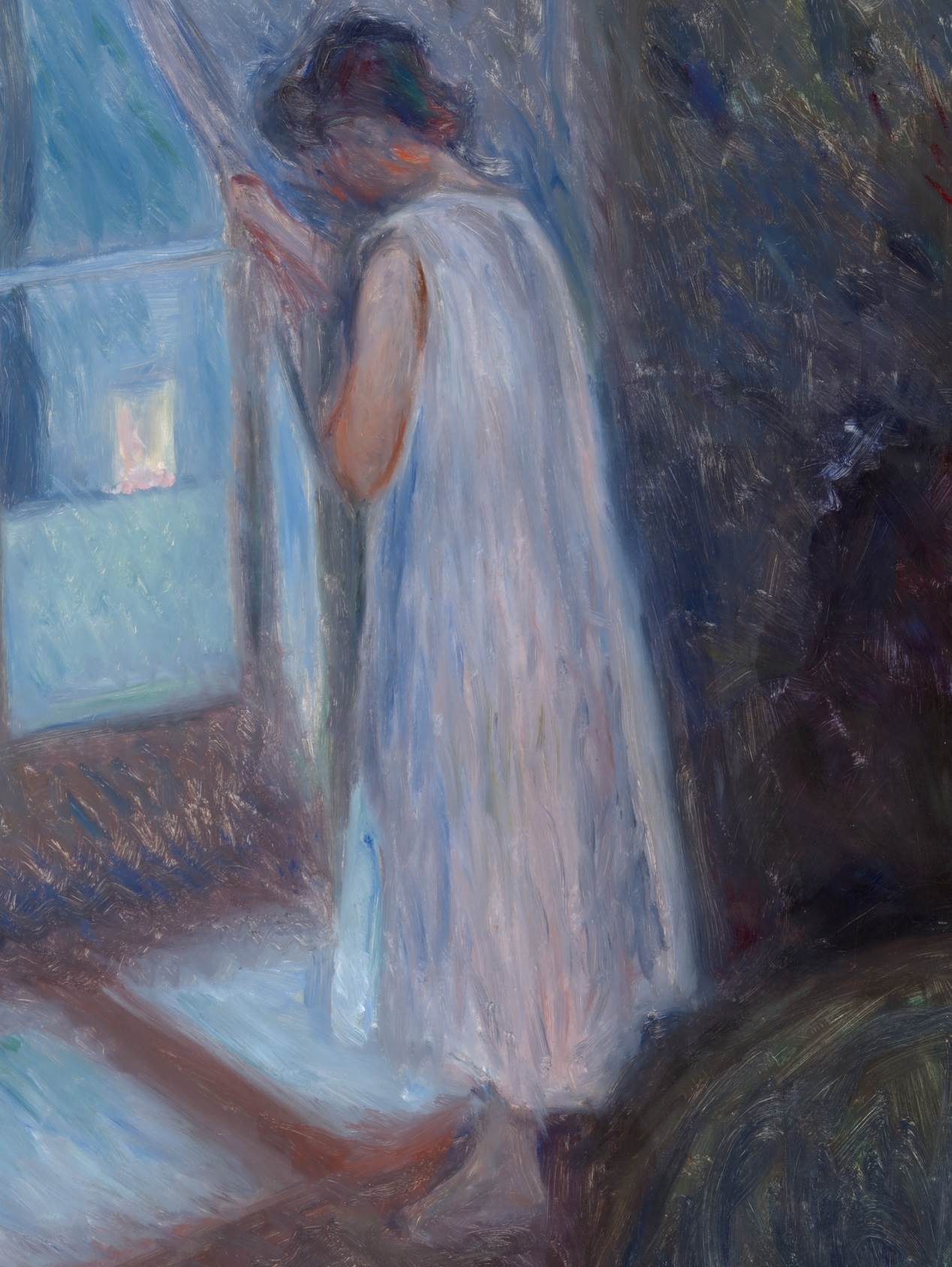Edvard Munch’s life and art — particularly his iconic work The Scream (1893; National Museum, Oslo) — have come to epitomize modern notions of anxiety. Yet the same year he painted his radical image, Munch was experimenting with other styles and themes. Frequent visits to Paris and Berlin between 1889 and 1893 brought the Norwegian artist into direct contact with the Impressionists and Symbolists. These travels encouraged him to adopt their bold brushwork, daring compositions, and imagery. But he nonetheless continued to incorporate the Romantic subjects of the northern European artists long familiar to him, such as a lone figure at an open window. This combination is powerfully manifested in The Girl by the Window, made soon after his return home to Norway.
In the dead of night, a young girl in her nightgown stands in a darkened room gazing out at the city. The steep angle of the floor and the deep shadows that obliterate everything in the room, save a suggestion of a piece of furniture at the lower right, create an unsettling and enigmatic scene. Loosely applied, somber brown tones mingle with violets and blues, evoking a feeling of melancholy and anticipation. The window functions as a symbolic barrier, separating the interior from the outside world. The sense of mystery is deepened and complicated by the fact that we cannot see the expression on the girl’s face, nor do we know what she covertly observes. She in turn appears unaware that, as she gazes from behind the curtain at something unknown outside, the artist and implied viewer are watching her.
爱德华·蒙克(Edvard Munch)的生活和艺术,特别是他的标志性作品《尖叫》(The Scream,1893年;奥斯陆国家博物馆),已成为现代焦虑观念的缩影。然而,同年,他画了自己的激进形象之后,蒙克(Munch)正在尝试其他风格和主题。在1889年至1893年间频繁访问巴黎和柏林,使挪威艺术家与印象派和象征主义者直接接触。这些旅行鼓励他采用他们大胆的笔法,大胆的构图和意象。但是,尽管如此,他仍继续融入他长期以来熟悉的北欧艺术家的浪漫题材,例如一个敞开的窗户上的孤单人物。这种结合在他回到挪威后不久创作的《靠窗的女孩》中得到了有力的体现。
夜深人静时,一个身穿睡衣的年轻女孩站在黑暗的房间里凝视着城市。地板的陡峭角度和遮盖房间内所有物体的深阴影,在右下角保留了一件家具,营造出令人不解和神秘的景象。松散地应用,琥珀色的淡淡色调与紫罗兰和蓝色混合在一起,让人感到忧郁和期待。窗户是一个象征性的屏障,将内部空间与外界隔开。我们看不到女孩脸上的表情,也不知道她暗中观察到的事实,这使神秘感加深和复杂化。反过来,她似乎没有意识到,当她从窗帘后面注视着外面不为人知的事物时,艺术家和隐含的观看者正在注视着她。
靠窗的女孩The Girl by the Window 爱德华·蒙克(Edvard Munch)油画作品欣赏

靠窗的女孩The Girl by the Window细节图欣赏:
穿着白睡衣的女孩细节图

透着夜光和灯光的窗户细节图

窗帘外的景色细节图

地板与家具细节图



评论